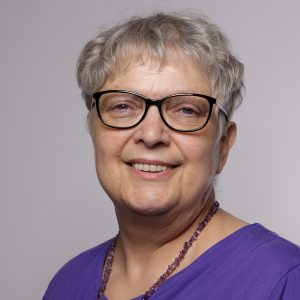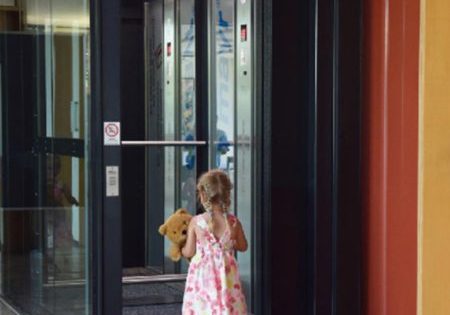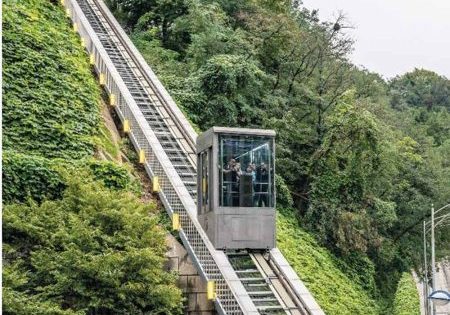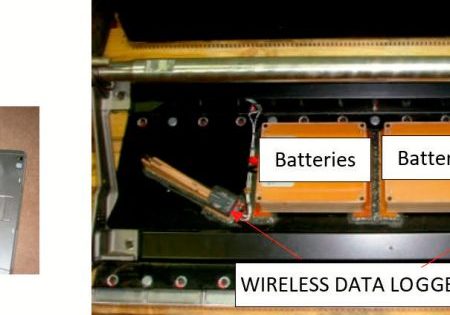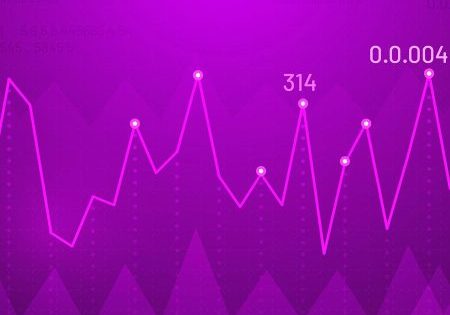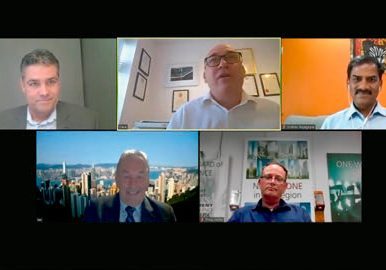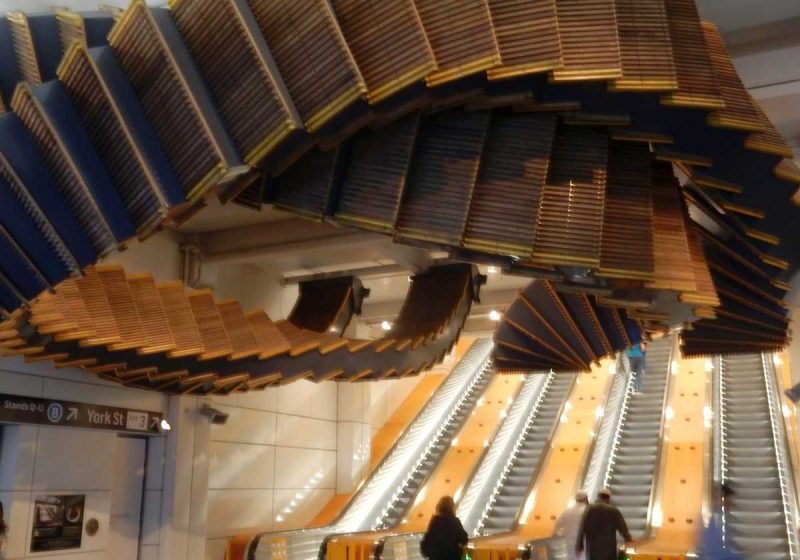TÜV AUSTRIA Lift Day 2020
Dec 5, 2020

Participants gather in person and virtually to discuss legal regulations.
In the Museumsquartier (museum quarter) in Vienna, Austria, and simultaneously online, about 50 participants gathered traditionally in September for the TÜV AUSTRIA Lift Day. Due to the COVID-19 pandemic, an appropriate framework, such as hygiene stations, route regulation, compulsory masks and personalized, distanced seating was created onsite for more safety. The online waiting time before the start of the conference was filled with two videos about elevator etiquette (not during a pandemic) and a humorous presentation of the services of TÜV AUSTRIA.
The focus of the conference was on current legal regulations, normative requirements and relevant testing tasks. The knowledge platform was used for an intensive exchange of information and experience among experts in the elevator industry. The participants included representatives of all interest groups, such as operators, facility managers, owners, manufacturers and authorities.
The welcome; information on the organization and, later, the moderation was provided by Magister (FH) Karin Newald from the TÜV AUSTRIA Academy. She is in charge of the program for elevator safety, construction and building services. Magister (FH) Christian Bayer, also from the TÜV AUSTRIA Academy, noted with regard to the difficult conditions, “Learning will always work!” Magister Thomas Maldet from TÜV AUSTRIA was in charge of the summary and conclusion of the conference.
Six topics were dealt with intensively. This report dips into particular Austrian features.

Current Developments in the Elevator Sector
This topic was led by Ing. (engineer) Thomas Maldet, TÜV AUSTRIA Head of Infrastructure & Transport-Elevator Technology.
The evolution of the elevator over the last decades has shown that everything technically feasible is also implemented, despite the risks. To ensure that technical developments are controllable and elevators are fail-safe, errors and dangerous conditions shall be avoided. The ASV Aufzügesicherheitsverordnung (lift safety ordinance) 2015 §4 regarding safety, among other things, risk assessment, and ÖNORM (Austrian standard) EN 81-20 provide assistance in this respect. The nine Austrian federal states almost all have different levels of implementation regarding safety measures for elevators according to the state of the art. Accidents can happen also due to this lack of uniformity.
A central point of the lecture is the annual safety (accident occurrence) report. There have been few accidents in Austria, but, unfortunately, there had already been a fatal elevator accident in 2020 that was still under investigation. In elevators, the most common cause is the automatic car door, which accounts for 60% of accidents. Stumbling is also a common cause of accidents. Children are involved in almost 40% of accidents. Escalators account for relatively more accidents, mainly falls. The figures are relatively stable; however, further improvements based on accident analyses are necessary.
In closing, Maldet noted that, with the coronavirus, a new risk has entered the elevator, and it has an impact on elevator operation. The knowledge is still growing, and, accordingly, the necessary response measures are changing and expanding. It is certain that COVID-19 has pushed digitalization in industry, including in elevator construction.
Emergency Calls Go Digital
Dipl.-Ing. Rainer Kindelmann, alcomtec aufzugsmanagement & -notruf (elevator management and elevator emergency call), introduced a modern internet protocol emergency call device. It is about 1,000 times faster than analog emergency call systems and with better voice quality due to Voice over IP.
Network Digitization
Dipl.-Ing. (FH) Michael Grübl, MBS MSc, Hutchison Drei Austria, primarily dealt with the digitization of the networks in Austria in his presentation, “The Future of Mobile Networks — 5G.” There are three physical networks in Austria. Mobile communication is quite cheap and among the best in Europe in terms of quality. 5G has been available since 2019 but is not everywhere, and it will take even longer for it to become widespread.
Legal Aspects
Magister Marlene Wimmer-Nistelberger, LL.M. associate, CMS Reich-Rohrwig Hainz Lawyers, focused on “Legal aspects of OVE EN 50518:2020-03-01,” which has been applicable in Austria since March 1. The standard describes the handling of alarm messages and emergency calls in structural, technical and organizational terms. The elevator emergency call, according to EN 81-28, is included in the scope of EN 50518; i.e., there is no contradiction between the standards.
State-of-the-Art Operation
Robert Schgör, TÜV AUSTRIA, spoke on state-of-the-art operation using the example of unintended car movement from a stop. Schgör defines the state of the art as “solutions to protect the health and safety of employees that have been successfully tested in practice.” A standard itself is not mandatory, but the state of the art is. In the case of harmonized standards, the date of publication gives an indication for the assumption that the state of the art is complied with if the standard is followed. The basis for this is the CE marking or determination of significant changes to existing elevators, which are laid down in §3, clause 4 of the Wiener Aufzugsgesetz (Vienna Lift Act) (WAZG). Minor changes can be found in ÖNORM B 2454-2:2010, Table 2. Schgör also defines the three terms:
- Modernization: elevators without CE marking
- Conversion: §6 b ASV 2015 Lift Safety Ordinance
- Exchange: identical replacement, e.g., of components
The risk assessment can be found in ÖNORM EN ISO 14798 and EN 81-80.

Earthquakes
Ing. Stephan Störmer, TÜV AUSTRIA, covered ÖNORM EN 81-77:2019. Theoretically, the paper is complete; in practice, however, the need for clarification exists, to which the following two experts from the construction side contributed:
- Dipl.-Ing. Dr. Stephan Steller, MA 37 – Building Police, laid mathematical foundations by addressing in detail the calculation formulas of the City of Vienna. Among other things, he stated that the ratio of the lever arms of buildings and elevators is the same in many cases. The earthquake fulfillment factor can be found in ÖNORM B 1998-3. He expects a bulletin from the Building Police of the City of Vienna for fourth quarter 2020.
- Dipl.-Ing. Dr. Klaus Petraschka, court-sworn expert, kppk ZT GmbH, introduced the audience to the “heavy fare” of statics based on ÖNORM EN 81-77 and EN 1998. Unlike Germany, in Austria, there is no map of the building ground classes A-E as a work basis.
The Future of the Elevator Emergency Call
Ing. Günter Baca, MSc., View Elevator, said, “About 50 years ago, when I was 5 years old, my parents taught me: ‘Don’t you ever push THAT button!’” This triggered his fascination with the subject of the “elevator emergency call.” Entrapments can be distressing if you are not freed, but emergencies are most dangerous if you can no longer press a button. As his company’s solution, he presented the emergency call via car monitoring with false-alarm and emergency detection, thus making the emergency call button redundant. His contribution led to intense discussions about data protection, monitoring options and their potential misuse. In the chat, for example, participant Hainz emphasized, “As long as safety does not take precedence over data protection, we are on the wrong track.” Baca agreed, saying the solution will come when it is legally covered.
Noise Abatement According to ÖNORM B 8115
Dipl.-Ing. Joachim Jira, JIRA ZT & SV GmbH, looked at the question of where the requirement values for noise abatement originated, first from a historical perspective. The first ÖNORM B 2115 on the subject dates back to 1936. It specified the disturbance level in residential buildings at 10-20 phon and required noise-abatement measures. A new version, in which a structure-borne sound insulation of 5 dB/m appears, was published in 1949. Elevator motors are mentioned for the first time in 1959. The individual standard became a series of four parts in 1981. Part 2 contained the definition of increased requirements for the first time. The requirements for building services from Part 2, status 1987, are still valid today.
Today’s limit values can be found in the OIB Guideline 5 Noise Abatement, version 2019, in each federal state’s version; a new version based on ÖNORM B 8115 Part 2 is almost finished. Sound measurement is carried out according to ÖNORM EN ISO 16032 or 10052, taking into account ÖNORM S 5004 and EN ISO 3382. It is important to check that the requirements are met. Jira states that with machine room-less and gearless drives, there is almost no longer a noise problem — except in the case of installation mistakes. If the elevators are from the 1960s to 1990s, wear and/or aging and, thus, increased noise can occur; e.g., because of hardening of insulation under concrete bases.
Get more of Elevator World. Sign up for our free e-newsletter.





